#coastal region farming
Explore tagged Tumblr posts
Text
The Future of Coconut Farming: Why Coastal Farmers are Being Advised to Embrace Hybrid Varieties
Farmers in the coastal region have been encouraged to adopt hybrid coconut farming to boost yields and meet the growing demand of the crop. Stakeholders in the coconut subsector, led by the Micro Enterprise Support Programme Trust (MESPT), are urging farmers to move away from the traditional African tall coconut tree varieties, which have low yields, and start cultivating new hybrid varieties…
#affordable seedlings#Agricultural Innovation#coastal agriculture#coastal region farming#coconut commercialization#coconut farming Kenya#coconut farming techniques#coconut market demand#coconut production#coconut value chain#DANIDA funding#farmer success stories.#high-yield coconut varieties#high-yield crops#hybrid coconut adoption#hybrid coconut benefits.#hybrid coconut farming#hybrid coconut seedlings#KALRO research#local seedling production#MESPT initiatives#public-private partnerships#Sampoorna hybrid coconut#smallholder farmers#sustainable farming
0 notes
Text




Iceland (2) (3) (4) by Rob Oo
Via Flickr:
(1) (2) Þingvellir. (3) Farm, Holt.
#coastal#wide sky#cloud formations#rock formations#countryside#farm#landscape#road stretching out#iceland#southern region (iceland)#capital region (iceland)
8 notes
·
View notes
Text

Persian Miku!?
In traditional Mazani clothing from persia!
More info⬇️⬇️
Mazandaran province is one of the 31 provinces of Iran. Its capital is the city of Sari . Located along the southern coast of the Caspian Sea and in the adjacent Central Alborz mountain range.Mazandaran is a major producer of farmed fish, and aquaculture provides an important economic addition to traditional dominance of agriculture. Another important contributor to the economy is the tourism industry, as people from all of Iran enjoy visiting the area.
Language: The population is overwhelmingly Mazandarani, with a minority of Gilaks, Azerbaijanis, Kurds, Georgians, Armenians, Circassians, Turkmen and others, Mazandarani people have a background in Tabari ethnicity and speak Mazandarni.
Culture( literature) : In the Persian epic, Shahnameh, Mazandaran is mentioned in two different sections. The first mention is implicit, when Fereydun sets its capital in a city called Tamishe near Amol:
بیاراست گیتی بسان بهشت.................... به جای گیا سرو گلبن بکشت
از آمل گذر سوی تمیشه کرد .............. نشست اندر آن نامور بیشه کرد
And when Manuchehr is returning to Fereydun's capital, Tamisheh in Mazandaran (known as Tabarestan), after his victory over Salm and Tur.
Arash the Archer is a heroic archer-figure of Iranian mythology. According to Iranian folklore, the boundary between Iran and Turan was set by an arrow launched by Arash, after he put his own life in the arrow's launch. The arrow was traveling for days before finally landing on the other side of the Oxus on the bark of a walnut tree hundreds of miles away from the original launch site atop a mountain
Music and dance:
Music in this region relates to the lifestyle of the inhabitants, and the melodies revolve around issues such as the forests, cultivation or farming activities and herding. The most famous dance of this area is the Shomali dance, not forgetting the stick dance that the men perform. Popular music in the province, known as the Taleb and Zohre, Amiri Khani and Katuli.
Cuisine :
The cuisine of the province is very rich in seafood due to its location by the Caspian Sea, and rice is present in virtually every meal. Mazandarani cuisine is diverse between regions; the cuisine of coastal regions is different from mountainous regions, as people in the Alborz usually use the indigenous herbs and coastal people use the dishes of fish and Caspian Mazandaran rice with vegetables.
#art#design#anime#fashion#fanart#miku#hatsune miku#vocaloid miku#miku fanart#persian#ancient persia#mazani clothing#twitter#artists on tumblr#my art#illustration#vocaloid#traditional clothing#traditional costume#miku challenge#international miku
2K notes
·
View notes
Text
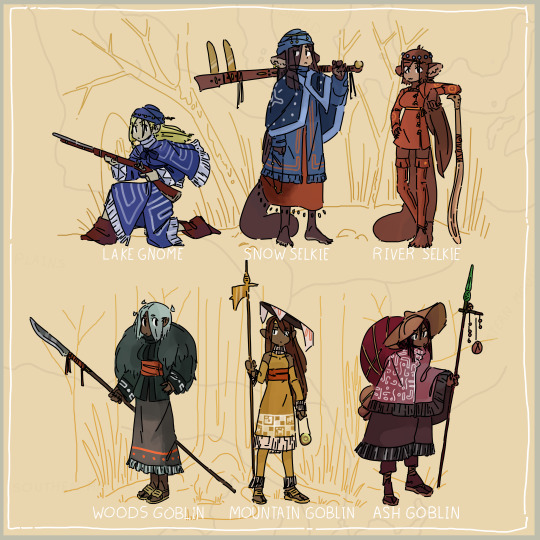
Great Lakes Cultures and affiliate Groups
Snow Selkies
Primarily inhabiting the northern shores of the Great Lakes, many years of contact with the first Gnomish Settlers have created a unique relationship which has provided a Cultural exchange of Beliefs and Goods. The various Snow Tribes which call the region home have united under a singular banner which partially include their Gnomish allies and more recently the River Tribes.
Lake Gnomes
Settlers of the Great Lakes Southern Shores, over the years the mountains have separated them from their Coastal counterparts. Extended exposure to regional cultures has further distanced them from their Druidic Roots. Knowledge of sophisticated metallurgy and the recent arrival gunsmithing knowledge has placed them in a unique position within the region.
River Selkies
Tribes of the Great River, recent conflicts have pushed their range to the Eastern Lake Lands and parts of the Laurentian Shield. Having once been the inhabitants of the Great River, long standing feuds with Woodland Tribes have pushed them northwards away from the Southern Forest lands. Wild Rice farming is a staple of many families in this region.
Ash Goblins
Beyond the Northeastern Grasslands sit the Ashen Forests, a region of land under the shadow of a smoldering Caldera. Isolated from the affairs of the far East, the Ash Goblin's only contact with the Great Lakes Region is through trade with the Woodland and River Tribes. Unique access to various artifacts and machines brings into question where such items are sourced from.
Woodland Goblins
The most numerous of the ethnic Cultures made up of various semi-related people which share a language family that loosely unifies the Tribes. In recent history, their expansion to the northern woodlands have placed them in direct conflict with a confederacy of Lake Tribes.
Mountain Goblins
The least established of the Tribes, limited to the Southwestern mountain Range which extends to the southern Continent. Their close relationships with the bordering Woodland groups provides them allies which are able to create a buffer between them and Northern Savagery.
164 notes
·
View notes
Text
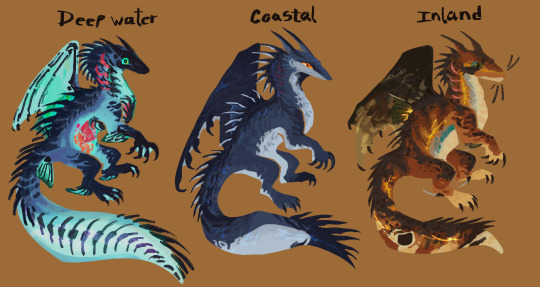
Based on the variety among sea animals I decided to make some regional variations of the coast strikers (note that these are variations only, not entirely new quivers or clades). The dragons shown here would be the most “defined” archetype of each variety, showcasing most or all traits characteristic of said kind. They all share certain base features, like rudder shaped tails, gills, harpoon tongues, echolocation, double rows of teeth, and flat tail spines that can be detached and thrown. However, some traits change or are more common in each variety:
Deep water
Make up about 5% of the population, and inhabit the smaller communities in deeper ocean. The main activities here are algae and mollusk farming, as well as resource collection from the sea floor, both of which require a more long term stay –despite the dangers of sea serpents and other such beasts–. Slightly smaller than their cousins, they’re better equipped for the depths rather than for flying: shorter wings, webbed talons, very broad tails, and gills being more oxygen efficient, although their dart spines are usually less in quantity and shorter compared to inland dragons. Extra flippers and more fin tissue between spines is common, as well as larger eyes to take in more light. Their most notable trait, is that of translucence. Most commonly, it’s usually just wings and torsos that are see through, but different dragons showcase different levels of said trait, some being completely translucent in rare cases (of course, trading better camouflage for less armor). Coloration typically goes from dark colors similar to coastal strikers, black, red, or sometimes pale colors (the latter present usually in the populations living in the deepest available settlements). Rarely, some slight bioluminescence is present in transparent sections of the body.
Coastal
The representatives of the Roaring Coast quiver, being around 80% of their numbers. Sleek, tall but well muscled, they inhabit the sea side cliffs on the coast and some settlements in shallower waters. Extremely long and narrow wings are perfect for soaring for hours out at sea, with webbed back talons and a flattened tail making them adept swimmers. Their blade shaped spines are plenty and deadly when thrown, and offer some protection to their necks and backs. Fin tissue in between the spines is few or non existent. An odd ability most present in this variety, is the one of spitting ink. Manifesting itself as dark splotches in the throat, this ink is dense and quickly expanding underwater, and very sticky and thick on land, making it useful at deterring predators or confusing prey. Countershading is the standard regarding coloration, with light colors underneath and darker ones on top, the latter usually ranging from black, gray to washed out shades of blueish or purple hues which shine with more vivid highlights under the sun. Most common patterns are stripes or flecks. A perfect balance between the sea and land.
Inland
The remainder of the coast striker population, they live in the rivers and lakes on the edges of the Roaring Coast territory, further inland but still relatively close to the ocean. Shorter but more stout than coastal strikers, with medium length wings, broad whiskered snouts and narrower tails. Their spines are closer to the average AshWing, being more needle shaped rather than a flat blade. Their colors are similar to those of pebbles and gravel (more earthy tones) and messy patterns of spots, blotches, stripes and rosettes. Fin tissue is more similar to that of fish, making itself present more than in the coast variety but less than those of deep waters, as well as having some slight webbing in all talons. Some notable features are some splashes of brighter colors, and semi retractable barbs in limbs and backs –like those of catfish– which can sometimes inject painful venom. These last two traits are similar to the ones present in swamp lurkers; this could be the result of convergent evolution or cross breeding between clades, given the relative proximity of their territories
On a final note, characteristics mentioned here aren’t exclusive to each variety: there could be a coastal striker with slight translucence and barbs, a deep water striker with whiskers and ink, or an inland striker with full talon webbing and jet black scales. These are increasingly likely if one parent has said traits. Additionally, many times these varieties and traits are not so starkly differentiated as are the ones show here, usually being a mild mix between some
#wof#wings of fire#ashwing#wof fanflight#art#all of the ramblings and info is under the cut teehe#also some differences i didnt really explain but you can see them (like the shape of the horns or spikes or claws etc.)#im having funnnn this is so fun#also clade is the word i think i'll be using when talking about the dragons so i dont have to say quiver each time#like. quiver is the society and clade is the type of dragon lol#if theres typos im exploding. and i forgot to draw the earsssss#ALSO each of these designs are now owned by friends lol (ily guys you know who you are)
307 notes
·
View notes
Note
Hello, this blog has been so helpful with writing tips.
Do you have any tips or information if you want to have a character that is Basque? Also if there's any information about the culture during the late 18th and early 19th century. Thanks!
Writing Notes: The Basques
Basque - member of a people who live in both Spain and France in areas bordering the Bay of Biscay and encompassing the western foothills of the Pyrenees Mountains.
In physique, the Basques are not notably different from the other peoples of western Europe; their language, however, is not Indo-European.
Basque language - language isolate, the only remnant of the languages spoken in southwestern Europe before the region was Romanized in the 2nd through 1st century BCE.
Today, the Basques remain physically somewhat distinct from their neighbours.
They are typically broad-shouldered and heavily built,
with distinctive triangular faces, and
they have light brown or medium brown hair and
often blue or grey eyes.
As is well known, they have the highest proportion of rhesus-negative blood in Europe (25 per cent) and
one of the highest percentages of type-O blood (55 per cent).
Many have interpreted these data, together with recent genetic data, as evidence that the Basques genuinely do represent a continuation of an ancient European population, comparatively little affected by millennia of the movement of peoples from east to west across Europe, just as their language indisputably represents the last survival of the pre-Indo-European languages of Europe.
As research has suggested, the Basques are a practical people par excellence.
They excel at business and commerce and they have produced notable industrialists and bankers.
The estuary of Bilbao is lined with blast furnaces and shipyards, and every city and town in Bizkaia and Gipuzkoa is crammed with industrial concerns, large and small, though the recent economic recession has hit the country hard.
Increasingly there are signs that economic activity is moving from the crowded coastal provinces to the more spacious and comparatively undeveloped expanses of Araba and Navarre.
The French Basque Country has not shared in this industrial development: designated by the centralist government in Paris as an area set aside for tourism, it offers little employment apart from that available in the garish strip clubs and casinos of Biarritz and the rest of the coast.
Two miles from Biarritz, the quiet Basque farmhouses look much as they looked a hundred years ago, though more and more of them are being abandoned as uneconomic, and the region is suffering depopulation as younger Basques leave to look for work elsewhere.
The land inhabited by the Basques has a mild and damp climate and is largely hilly and wooded.
It contains mines of iron ore, which early on favoured the development of industries, particularly shipbuilding.
The Basques traditionally farmed small holdings of bottom land and carefully tended slopes of grass, which they cut by hand and fed to stabled cows.
Apple orchards and mountainous sheep pastures were also important to their economy. The farmhouses are loosely grouped into villages or are scattered over the lower slopes.
The household (including buildings, farm, and family) was an entity of great permanence that was formerly defended by a traditional law of inheritance which ensured the descent of the property intact to a single heir or heiress.
Traditional Basque culture therefore revolved around this individual farmstead, called the caserío, the isolation of which resulted in a strong sense of family kinship among its occupants.
Besides being farmers of small acreages and shipbuilders, the Basques were traditionally seafarers.
Basques played a leading part in the colonization of the New World, sailing with the conquistadors and being among the first to exploit the whaling grounds of the Bay of Biscay and the cod fisheries off Newfoundland.
The Basques’ ethnic solidarity and their position astride the Franco-Spanish frontier also made smuggling one of their traditional occupations.
The Basques have a strong allegiance to Roman Catholicism.
They were not converted to Christianity until the 10th century, however, and, although they are now among the most observant of Spanish Catholics, animism survives in their folklore.
Traditional Basque culture has declined with the pronounced urban and industrial development of the region, and emigration to France and the Americas has sharply reduced the population living in caseríos.
In most of the larger industrial towns, not only Basque customs but also the Basque language tend to be lost.
Basque is still spoken in remote inland mountain areas, but in the late 20th century, virtually all Basques spoke French or Spanish, whether or not they spoke Basque.
The Basques possess a distinctive culture and language, perhaps the result of their relative isolation from the rest of Europe until comparatively recently.
A BRIEF HISTORY. It has been suggested that their ancestors migrated to Europe from the Caucasus about 12,000 years ago and about 5000 years ago moved to the Basque country.
Although the Basque country is divided between France and Spain, the Basques have maintained an identity separate from both states.
From the 14th century onwards the Basques were renowned for their fishing and whaling skills.
18th-19th Century. After a period of relative independence, Basque self-government was abolished by the Spanish government in Madrid beginning in 1839. Over time, a growing Basque nationalist movement began to insist on political unity and agitate for a separate Basque nation.
Basque culture underwent a revival in the late 19th century, which ensured its continuance into the 20th century.
During the Spanish Civil War, the Basques supported the Republic; in reprisal, German aircraft acting on behalf of Franco’s Nationalists destroyed the Basque town of Guernica in 1937.
Under Franco’s regime, concerted attempts were made to suppress the Basque culture and language.
In recent decades many Basques in Spain have campaigned for an independent Basque state, some through the nationalist party Herri Batasuna or its violent military wing ETA (Basque Fatherland and Liberty).
In 2011, after several abortive ceasefires, ETA declared ‘a definitive cessation of armed activity’.
Sources: 1 2 3 4 5 ⚜ More: References ⚜ Writing Resources PDFs
Thanks so much for your kind words, glad to hear! Choose which of these information would be most appropriate to incorporate into your specific story. Do go through the sources as well for more details. Hope this helps with your writing.
#anonymous#writing notes#character development#history#writeblr#dark academia#spilled ink#creative writing#literature#writing prompt#culture#character building#character inspiration#writers on tumblr#light academia#writing inspiration#writing resources
44 notes
·
View notes
Text
Fish of the Day
Today's fish of the day is the European eel!

The European eel, known by scientific name Anguilla anguilla, is a common eel within Europe. Found within, (shocker) Europe and western Asia, this eel has a range focused around the Northern Atlantic ocean stretching from The Eastern United States to Western Europe and North Western Africa. This includes populations within the Caspian, Black, Mediterranean, North, Norwegian, Barents, and Kara seas, but there is a special emphasis on the populations within the Sargasso sea nearby Florida, as this is where they migrate for breeding purposes. They can live within most habitats worldwide, as they thrive in both freshwater and marine environments, along with a temperature range from temperate to subtropical. Primarily benthic, like most eels they live their lives along the sea bed, hiding in vegetation during the day, and hunting during the dark of night.

The diet of the European eel consists of benthic organisms: primarily mollusks, crustaceans, and small fish, although there have been records of them eating one another if the chance arrives. This benthic lifestyle is essential to the survival of the eels, as they are regularly predated on by large water birds, marine mammals, and of course, humans. Human hunting of these eels is incredibly popular across Europe, with the eels being used in dozens of regional dishes. The European eel in fact makes up almost 44% of eel sales into the United States, and there's a vast market of illegal eel hunting and farming within Europe and Asian countries to support demand. Farming is inefficient for production of these eels, leaving humanity with a thousand year old question on how the European eel breeds, after centuries of no success artificially. Completely blocking the market into catching live, wild eels for consumption. This is one of the reasons for the endangered status of an animal that once made up as much as 50% of all fish biomass in some freshwater systems of Europe. Today however, these eels have been vanishing from all of their natural environments, leaving a panic as to if total extinction is on the horizon.

During our time as an animal hunting the European eel, we have been left with a question that has evaded us for centuries: how does the eel breed? Discovered in 2022, humanity finally has our answer. The European eel has a life made up of a cycle of metamorphoses. After hatching from their eggs, they will live as larvae for up to 300 days, where they will float on the gulf stream to Northern Africa, before going through their first metamorphosis. After the larval stage, the eel will live out around a year as a young state referred to as a glass eel. Named for their transparents state, these eels are camouflaged like this, as this is when they begin their swim back to coastal or freshwater homes. Despite being almost entirely invisible to the human eye, this is when they are most predated on, and only around 1 per 500 eels born in a year will make it into their freshwater or coastal homes.

Most eels who are caught for farming purposes are caught in this stage, primarily as they enter into well known freshwater territories and are bottle-necked into a small area all at once. However, if the eel is uncaught, it will go through a second changing into an elver, which is the name for a small version of the adult eels. After this isn't another metamorphosis, but rather them gaining color for the first time, becoming yellow eels, it will live like this for anywhere from 5-20 years, slowly growing larger with time. Once these eels have reached a sufficient mass, they will finally sexually mature. The eyes grow larger, these eels will begin releasing a steroid to allow more energy for migration, and they become a silver reflective color that is hard to spot underwater. This is the last part of the life cycle of eels, referred to as silvering.

Migration of the European eel has been a mystery since the time of Aristotle. The silver color makes them hard to track, and there is no record of a silver eel ever being caught within its migration pathway, leaving us blindsided to how and where they might breed. However, in 2022 with the help of the ARGOS system, which is a series of tagging GPS systems, attached to silver eels before they make their way into the ocean. With this confirmation, the mystery of eel reproduction has finally been solved, telling us that the European eel travels anywhere between 2500-6,500km to breed in the Sargasso sea, just East of Florida. These eels would swim anywhere between 2.9-11.9km a day, and have a journey that lasts anywhere from 180 days, to 400, oftentimes completely missing the ongoing breeding season, to make it to the next one. This has confirmed to us that they travel slower than they need to, ensuring that they are not caught or predated on before spawning. Once in the Sargasso sea, these eels will begin the spawning season in December, peaking in February/March and then ending in late May. Females will carry up to 3,000 eggs with her, and spawning is done is masses, with eggs released and fertilized before the adult eels pass away, leaving only the fertilized eggs behind to survive them.

That's the European eel, have a wonderful day, everybody!
#fish#fish of the day#fishblr#fishposting#aquatic biology#marine biology#freshwater#freshwater fish#animal facts#animal#animals#fishes#informative#education#aquatic#aquatic life#nature#river#ocean#eel#european eel
50 notes
·
View notes
Text
Valendia, A Land of Fertile Soil and Flourishing Civilization

The region of Valendia is a land blessed with fertile soil and a mild climate. This region thrives on its agricultural wealth, particularly wheat farming and chocobo grazing, while the coastal areas along the Naldoan Sea are bustling with shipping and fishing industries.





Though the area surrounding Archades, the empire's capital, is naturally barren, Archadia has overcome these challenges with its unparalleled technological advancements and abundant human resources. These attributes have solidified its status as a dominant power in the region.
The former border of the empire, Phon Coast, is guarded by the Imperial Air Force, it stands ready to repel potential air raids from the Rozarrian army.


<- While air travel is highly advanced, the region also keeps well-maintained roadways. These routes are complemented by numerous secure rest areas, offering travelers safe and convenient stops during their journeys.
#ff12#location: archadia#location: phon coast#location: balfonheim#location: cerobi steppe#location: tchita uplands#ffxii#final fantasy 12
19 notes
·
View notes
Text

A cook of a Sh'Czekl merchant family at work in an outdoor kitchen, preparing a holiday dinner.
---
Sh'Czekl are the people of the coastal Czekl region, culturally related to other Czekl but having ancestry further west down the inner seas. Most of the population is clustered in a modest trading hub where the Longhorn River meets the sea, seeing the comings and goings of traders from all ends of the inner seaways.
The region has few mining operations, and natively-made metal implements are typically rare and costly. The most common (and cost effective) option for big pots, pans, and grates such as these are mostly acquired in trade, and often made by and for humans.
The Sh'Czekl diet consists mostly of farmed arthropods, invertebrates foraged from shorelines and tidal pools, and hunted shorebirds. Fish play little to no role in the diet. It is forbidden for Sh'Czekl to eat anything that lives permanently in the sea, as all sea-life belongs to the god Si (who is known to send storms and tidal waves when insulted).
Their location along major sea trade routes also grants significant access to spices non-native to the region (such as cumin, imported primarily from southern Wardin) alongside regional flavoring (such as firebug, a key export from the region- a strong flavored stinkbug dried and crushed as seasoning).
---
What this guy's cooking: A stew of caviar ant eggs/larvae and nuts in a shellfish broth with pepper and firebug, grub and locust kebabs, daggerclams rolled in cumin and fried in lard, and an inner sea tiviit spiced with pepper, firebug and honey and grilled over hot coals.
257 notes
·
View notes
Note
how Sirenians deal with disability?
Depends on the culture, and there are hundreds if not thousands of cultures in Siren. To give specific examples -
I've drawn a "shortstrider" harpy wearing assistive devices on his feet - this type is relatively widespread in the coastal regions of the East continent, flightless but without the thick plantar padding that lets them walk easily for long periods on the ground. On earth we call those assistive devices "shoes". While technically a disability anywhere else in the continent, it's common enough in these coastal fishing village regions that it is not remarked upon and getting the right footwear is a simple process. The same harpy in the Spire would be pretty disadvantaged as the place is set up to privilege flight and perching, and a shortstrider's feet are not setup to perch either. In this case the disability is completely relative in the extent to which it disables.
Qedivar can't fly. In the Spire it's not much of a locomotive issue as there are rope ladders everywhere and he can perch (like I said the infrastructure is designed for perching and flying). There aren't any assistive devices he could use to make him fly, and once it becomes clear that his reluctance to fly isn't just because he doesn't like exercise (which was his original cover story), the others treated him with at best pity and at worst contempt. The culture of extreme open emotions & communication in the Spire meant that if people thought less of him, they would tell him right out. Nothing is swept under the rug at the Spire and often times people find it refreshing and freeing, even if what's 'refreshing' is people saying to your face that you suck and not whispering it behind your back (neurodivergent people with trouble reading social situations loooove the communication culture here). He also wears glasses, which, like the shoes in coastal regions, are nbd. Bad eyesight is common among scholars anyway (all that reading)
In pelagic villages south of the Western continent (Huarva's home), the culture of communication is the extreme opposite. It is indirect to the point where you should simply assume that every word out of someone's mouth has at least ten different hidden meanings. Nobody ever says what they mean (and it is considered crass to do so), which is a nightmare for anyone who struggles to read social cues. Life in this region is harsh and risky, and villages might struggle to survive year on year if the currents don't bring enough food or seeds for their crops. A physical disability that limits one's ability to contribute (whether by hunting, farming, fishing, etc) will be punished. Your daily contributions measure how much food you can eat from their big eternal stew pot, so sub-par contributions have the effect of slowly starving out people who don't work. Due to the communication culture, there's never anything as dramatic as a "we don't want you here, leave". You're just supposed to get it. You're supposed to infer that you should leave, that you're not wanted. And if you can't, tough lol.
Finally I guess i should talk about the longwing visors. These make wonderful assistive tools, particularly for harpies who are hard of hearing or visually impaired (it's why Terwyef wears one, he can't see well without it due to his albinism. for deaf harpies the automatic transcription feature is a great help). Any longwing harpy can interview at the hall of faces to get a chance to claim a visor. Whether or not it's being used to aid a disability is not considered during the interview process; you get a visor if you can match a character. But there have been occasions where the guardian of the hall of faces intentionally tipped the scales in favour of a disabled candidate, recognising that a visor would be a significant improvement to their quality of life.
#setting: siren#long post again lol but interesting question#oh also worth mentioning zettas' sign language though it's not really socially considered a disability that they have mutism either
44 notes
·
View notes
Text
Night Life on the Slope
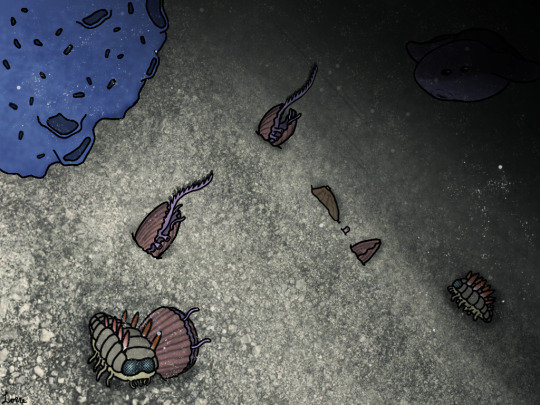
Roughly 300km away from the shore, the shallow, sunlit seas surrounding the continents begin to taper down into deeper waters, trailing down to depths of 3,000m. This is the Continental Slope, a transitionary region where the open ocean meets the coastal shallows. Here, currents flow over the seabed, bringing plankton and sediments along with them. Here, the soft, sandy substrate is too loose and fine for more abundant reef-building sponges; however, there are other organisms which thrive in these environments.
Scattered along the bottom are the protruding heads of Scrimbolos. While they look like clams, it is only its head which protrudes above the surface; the rest of the organism lies within a burrow, which it uses both as shelter and as a means of locomotion. Hidden from sight, these wormlike Taco Slugs form huge colonies, filtering passing plankton from the current with their extendable tongues. Safe they may be from surface predators, however, opportunistic Farm-Hat Taco Slugs occasionally try to dig them out.
But it isn't only Scrimbolos that lay claim to these depths; slowly skittering among them are juvenile Goggle Grubs. These phototrophic creatures normally spend the daytime hours gathering in surface waters, where their algal symbionts can soak up the sun's rays. During the night, however, the more mobile young Grubs migrate down into deeper waters, to sift through softer sediments packed with marine snow and detritus. But where the daytime creatures go, their predators are not far behind; lurking in the darkness at the edge of our view, a Noot Sloop patrols along the slope, searching for any vulnerable creatures hiding in the gloom. These deepwater Sloops usually bear darker coloration than their shallow-water counterparts, likely as a means to blend in better with the surrounding water.
#The Astraea Project#Enydreian Explosion#Diorama#Art#speculative biology#speculative evolution#worldbuilding
17 notes
·
View notes
Text
A devastating population collapse that decimated stone age farming communities across northern Europe 5,000 years ago may have been driven by an outbreak of the plague, according to research.
The cause of the calamity, known as the Neolithic collapse, has long been a matter of debate.
Studies based on DNA from human bones and teeth excavated from ancient burial tombs in Scandinavia – seven from an area in Sweden called Falbygden, one from coastal Sweden close to Gothenburg and one from Denmark – now suggest that disease played a central role.
The remains of 108 people – 62 males, 45 females and one undetermined – were studied. Eighteen of them, or 17%, were infected with plague at the time of death.
The researchers were able to chart the family tree of 38 people from Falbygden across six generations, spanning about 120 years. Twelve of them, or 32%, were infected with plague. Genomic findings indicated that their community experienced three distinct waves of an early form of plague.
The researchers reconstructed full genomes of the different strains of the plague-causing bacterium Yersinia pestis responsible for these waves. They determined that the last one may have been more virulent than the others, and they identified traits indicating the disease could have spread from person to person to cause an epidemic.
“We learned that the Neolithic plague is an ancestor to all later plague forms,” said Frederik Seersholm, a geneticist at the University of Copenhagen and lead author of the research, published in the journal Science.
A later form of this same pathogen caused the Justinian Plague of the sixth century AD and the 14th-century Black Death that ravaged Europe, north Africa and the Middle East. Because the strains circulating during the Neolithic decline were much earlier versions, the plague may have produced different symptoms than those in the epidemics millennia later.
The study demonstrated that the plague was abundant and widespread in the area examined.
Martin Sikora, who is also a geneticist at the University of Copenhagen and a co-author of the report, said: “This high prevalence of plague indicates that plague epidemics played a substantial role in the Neolithic decline in this region.
“Indeed, it seems plausible that the decline seen in other parts of Europe was also in some way affected by plague. We do already have evidence for plague in other megalithic sites in different parts of northern Europe. And seeing how prevalent it was in Scandinavia, I would expect a similar picture to emerge once we study these other megaliths with the same resolution.”
The Neolithic or new stone age involved the adoption of farming and animal domestication in place of a roving hunter-gatherer lifestyle. The Neolithic population crash in northern Europe occurred from about 3300BC to 2900BC. By that time, cities and sophisticated civilisations had already arisen in places such as Egypt and Mesopotamia.
The populations of Scandinavia and north-western Europe ultimately disappeared entirely, replaced by people known as the Yamnaya who migrated from a steppe region spanning parts of present-day Ukraine. They are the ancestors of modern northern Europeans.
“Up until now, multiple scenarios have been suggested that might explain the Neolithic decline: war or simple competition with steppe-related populations who became prevalent after the Neolithic decline; an agricultural crisis leading to widespread famine; and various diseases, including plague,” Seersholm said. “The challenge was that only a single plague genome had been identified before, and it was not known whether the disease was able to spread within a population of humans.“
The DNA evidence also offered insight into the social dynamics of these communities, showing that men often had children with multiple women and that the women were brought in from neighbouring communities. The women appeared to be monogamous.
“Multiple reproductive partners could mean several wives. It could also mean men were allowed to find a new partner if they became widowers or they had mistresses,” Seersholm said. {read}
25 notes
·
View notes
Note
as a kansan i really appreciate you bringing up the possibility of kon having a midwestern accent. i’m not really sure where this idea i see in superfam fics sometimes of kansans talking like southerners comes from, but no one i know in real life talks like that, even in the most rural parts of the state. i do know people with conditional country accents, but they’re generally from rural missouri (which despite being at the same latitude is actually a lot more culturally southern than kansas!) and only talk that way when they’re IN rural missouri, surrounded by other rural missourians. us kansans consider ourselves midwesterners! i say “ope” on a daily basis and i think kon should too!
Let Kon Say Ope 2k24! [re: this previous post]
this was really interesting to read, thank you! re: talking like southerners, i was kicking this around in my mind and i wonder if sometimes there’s a rural/southern conflation happening. i grew up in a rural area of the US that was not southern (nor midwestern) but there were definitely a lot of...southern aesthetics going on? like even in our non-southern region, sometimes "southern" was almost a shorthand for "rural"--specifically a white, working-class idea of southern living that shows up like a motif on the country radio station, in movies, etc. as a contrast to Big City Living. (the “sweet home alabama” vibe, if you will.) as in, it felt like most of the cultural touchstones for rural living were markedly southern. no idea if this shorthand is replicated in other regions (though i’ve def noticed the association in some friends who grew up coastal/in cities) and i can’t speak intelligently about this beyond my own half-baked observation, but i might guess that some people see “farm” / “small rural town” and auto-populate sweet home alabama.
or i’m overthinking it and it’s just a case of failed geography lessons 😅
#i know this isn’t a significant obersavtion it was just really interesting to think about once i got started#also i'm aware the asker in the original post knew this distinction too#and they were saying kansas does not have the country accent 🫡#asks
21 notes
·
View notes
Text
Israel may be small in size, but it is vast in its diversity and historical richness. Imagine a place where within just a few hours, you can transition from the serene, mineral-rich waters of the Dead Sea, the lowest point on Earth, to the snowy peaks of Mount Hermon. This is a land where ancient history and cutting-edge innovation coexist in harmony.
From the bustling, modern cityscape of Tel Aviv, alive with vibrant culture, technology, and nightlife, to the timeless tranquility of the Negev Desert, Israel is a country of contrasts. In the north, the lush Galilee region offers breathtaking natural beauty, with forests, hills, and waterfalls, alongside communities from diverse cultural backgrounds living together.
Jerusalem, a city sacred to Jews, Christians, and Muslims, stands as a testament to the country's layered history, with its ancient walls and bustling marketplaces narrating stories of the past and present. Meanwhile, coastal plains alongside the Mediterranean offer sandy beaches, archaeological sites, and seaside towns, each with its own unique character and history.
The climate varies from region to region, supporting different ecosystems and agricultural products. From the Golan Heights' vineyards to the date farms of the Jordan Valley, Israel's agricultural landscapes are as varied as its people and history.
Despite its compact size, Israel is home to a mosaic of cultures and traditions, languages, and cuisines. Each community contributes its own piece to the complex puzzle that is Israeli society, creating a vibrant and dynamic nation.
In Israel, the past and the future are intertwined, with ancient archaeological sites sitting alongside high-tech cities. It’s a place where every stone has a story, every city a different melody, every landscape a unique beauty. Despite its small geographical footprint, Israel offers a rich tapestry of experiences that defy its size.
Hebrew is the official language of Israel, with Arabic also holding official status.
42 notes
·
View notes
Text
Day 11-Sodor Blues
Day 11-Fauna
Other Stories
Other Days
“Welcome back to Preservation and Conservation. Today we are in for a special treat, the Sodor Blue. The sheep on the island of Sodor, off the coast of Barrow in Furness, are a unique breed.”
“Screw off you wooly…”
Henry continued over the mogul’s yelling, “As cattle were rare in the island until the later half of the 18th century, the people of the island relied upon their flocks of sheep for their meat, milk, and wool. Their careful breeding resulted in the Sudrian Blue.”
“Off of the line, you worthless walking rugs!” James swore.
“With the establishment of harbors, and later rail lines on the Island beginning in the mid-1800s, the island began exporting the wool and meat to mainland Britain and Ireland.”
“Move!”
“The meat quickly became prized for its savory flavor, and the wool for its strength, but with the construction of railways and harbors,much of Sodor’s natural wetlands and marshes were drained. This provided pastures fit for cattle, and the breed began to dwindle as competition from the cattle farms threatened the traditional farmers of Sodor’s hills.”
“I assured you, there's no lack of the wooly devils!”
“Relief would come from an unexpected source. Sodor's canal network.”
“Then throw them in it! They're fat enough to float.”
“Established in the 1700s, Sodor's canal network ran through the southern reaches of the island, branching off of and connecting the rivers of Els, Reagh, Maura, Hawin Ab, Hawin Croka and the River Hoo. The main form of transportation in the Southern region of the island prior to the introduction of the railways, the Canals were, and are seen as a cornerstone of Sudrian culture and identity.”
“Did you just sneeze on my paint?! You miserable walking rag! I shoul…”
“Many Sudrians made their livings on the canals, transporting slate, wools, mutton, fish, and more from the coastal cities to the farms inland and back.”
“They’ll have more wool and mutton than they can carry if these sheep don't get out of my way!”
“In a glimpse of the future of Britain's canal network, many lived on their boats, spending their lives crossing the island slowly, taking days or weeks to complete a circuit of the network.”
“That's still a far sight faster than these…”
“They were then understandably dismayed, when large amounts of cow dung were washed into the canals with each rain, which given Sodor's placement within the British Islands, was a far too common occurrence.”
“…Ew.” James scrunched his nose in disgust.
“In 1873 the Canals approached the Sudrian Council with their complaints toward the cattle farms. And in August of that year the council convened to hear the case. The men chosen to represent the canals focused their arguments on the effects of the dung being swept into the canal and flowing downstream toward the coastal towns. Affecting the air and drinking water for not only those who lived on, but along the canals and rivers. The farm owners, largely businessmen from the mainland, argued the canals were obsolete and would soon be replaced by the railways anyway.”
“I see businessmen haven't changed since then,” James muttered, wheeshing away a sheep who was getting too close.
“Perhaps unsurprisingly, the council sided with the canals, and banned the farms from grazing their cattle within a mile of the canals and rivers of the island, restricting the cattle farms to small pockets across the island. Most of the cattlemen left the island, some abandoning their herds on the island. Some of the former sheep farmers came together, and formed dairy farms with the abandoned herds. The abandoned fields along the canals and rivers soon were filled with villages and towns as Sodor’s population boomed with the arrival of industry. The sheep farms grew once more as Sodor turned back to them for meat and wool.”
“...if you bite my buffers I will bump you.”
“Time went on and the world changed around them, leading to the sheep getting into trouble. Sheep are highly intelligent animals…”
“Are they??”
“...and are highly prone to escaping their pens. In the old days, this merely meant finding their way into the next field or forest. Today it means causing havoc for the local roads and railways.”
“You don't say.”
“Nonetheless the escapes are largely harmless, if frustrating, and life for the Sodor Blue has changed little since the inception of the breed.”
“MOVE!!”
#ttte fanfic#rws fanfic#fanfic#Traintober#Traintober24#Traintober2024#ttte james#ttte henry#Prompt-Fauna
16 notes
·
View notes
Text
Good News - May 1-7
Like these weekly compilations? Support me on Ko-fi! Also, if you tip me on Ko-fi, at the end of the month I'll send you a link to all of the articles I found but didn't use each week - almost double the content!
1. New study says conservation works, providing hope for biodiversity efforts
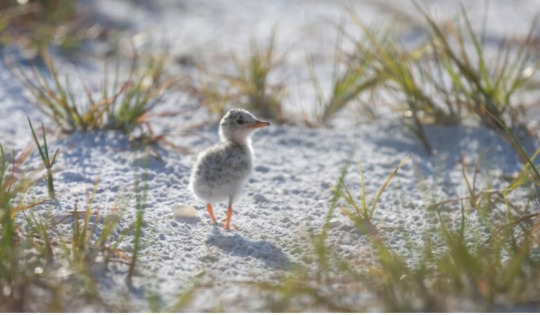
“A new study published in Science reveals that conservation works, with conservation actions improving or slowing the decline of biodiversity in two-thirds of the cases analyzed.”
2. Monk Seal Pup Debuts in Waikīkī on Lei Day
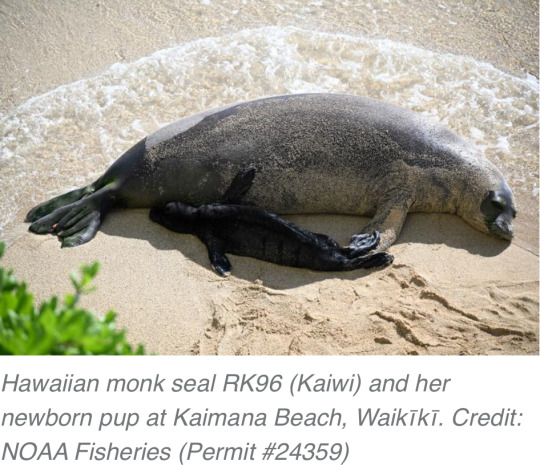
“Endangered Hawaiian monk seal RK96 (Kaiwi) gave birth to her sixth pup on popular Kaimana Beach in Waikīkī, Oʻahu! […] Hawaiian monk seals are one of the most endangered seal species in the world, so each pup represents hope for the species’ recovery.”
3. West Coast Indigenous-led marine conservation area gets global spotlight
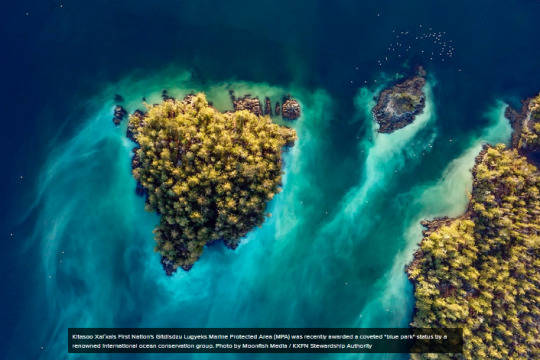
“A coastal First Nation is celebrating global recognition of its marine protected area after recently snagging a “blue park” designation that highlights exemplary ocean conservation efforts around the world. […] Kitasu Bay supports one of the last abundant herring spawns along the central coast, vital to the nation’s communal herring roe on kelp (ROK) fishery - which harvests the protein-rich eggs but leaves the fish alive to flourish and spawn again.”
4. The number of fish on US overfishing list reaches an all-time low. Mackerel and snapper recover
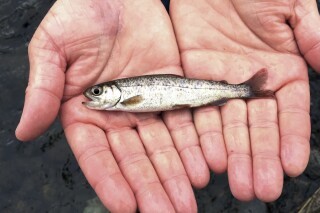
“The report states that 94% of fish stocks are not subject to overfishing, which is slightly better than a year ago. The U.S. was able to remove several important fish stocks from the overfishing list, NOAA said in a statement. […] The removal of species from the overfishing list shows the U.S. is making progress, said Rick Spinrad, NOAA’s administrator.”
5. Researchers Collaborate with the Shipping Industry to Cut Costs, Fuel Consumption and Greenhouse Gas Emissions in Shipping
“Through coordinated ship scheduling and an optimisation of ship operations and port services, the objective is to achieve a substantial increase in energy efficiency and a 10-20% reduction in fuel consumption, consequently resulting in lowered greenhouse gas emissions [and] leading to substantial economic benefits for shipping and environmental advantages for society[….]”
6. The city flower farm that is changing lives
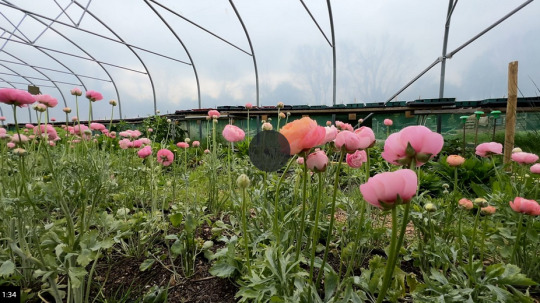
“Heart of BS13 Flowers in Hartcliffe is part of the wider Heart of BS13 charity which tackles food insecurity in south Bristol. Profits from the flower sales to run workshops, offer volunteer and trainee placements, and create education opportunities for people from Hartcliffe.”
7. Four falcon chicks hatch in Glasgow university tower
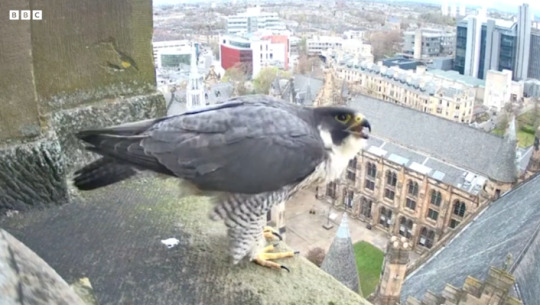
“Members of the [Glasgow Peregrine] project hope to […] fit [the chicks] with electronic tags that will enable monitoring of their movements. Mr Simpson added: "With the identification tags we can see where they have gone, how high they fly and other information that would be really useful." In recent years the group have held peregrine watches at the university, allowing people to see the birds in their nest.”
8. 'Banana pingers' are saving whales and dolphins around the world
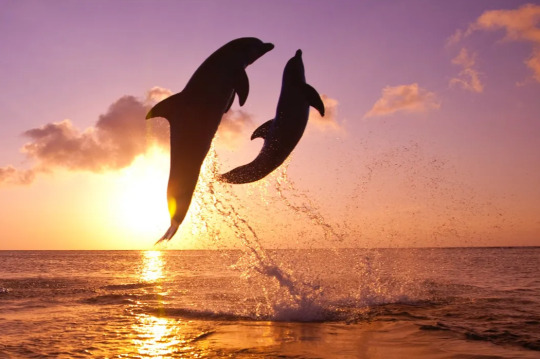
“[T]he Kibel brothers, Pete (a fisheries biologist) and Ben (an engineer) […] have been utilising light to protect turtles, sound to protect porpoises and electro pulses to protect sharks. [… Trials] showed reduced average catch rates of blue shark by 91%, and catch rates of pelagic stingray by 71% […as well as] a fall in the number of sea turtles being trapped by 42%.”
9. New vaccine effective against coronaviruses that haven't even emerged yet
“Researchers have developed a new vaccine technology that has been shown in mice to provide protection against a broad range of coronaviruses with potential for future disease outbreaks -- including ones we don't even know about. […] The new vaccine works by training the body's immune system to recognise specific regions of eight different coronaviruses, including SARS-CoV-1, SARS-CoV-2, and several that are currently circulating in bats and have potential to jump to humans and cause a pandemic.”
10. Grassland birds, Forest birds and Other Migratory Birds to Benefit from More Than $22 Million in Funding Throughout the Americas
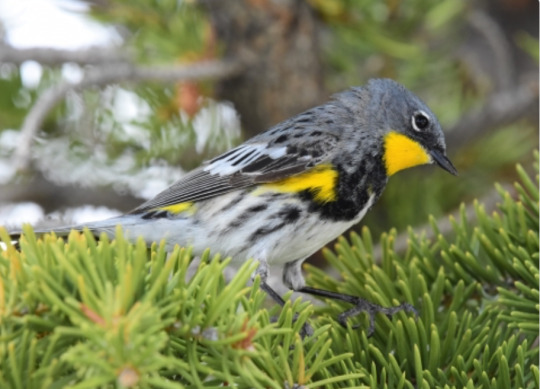
“This year, more than $4.87 million in federal funds will be matched by more than $17 million in partner contributions going to 30 collaborative conservation projects in 19 countries across the Americas. “These investments will [… protect] millions of acres of diverse habitats needed by grassland birds, forest birds and shorebirds for wintering, breeding and migration,” said Service Director Martha Williams.”
April 22-28 news here | (all credit for images and written material can be found at the source linked; I don’t claim credit for anything but curating.)
#good news#hopepunk#sorry its late i got distracted lol#biodiversity#conservation#seal#monk seal#hawaiʻi#oahu#first nations#fish#noaa#shipping#climate change#greenhouse gasses#ships#flowers#falcon#glasgow#university#peregrine falcon#birds#whale#dolphin#shark#turtles#vaccine#coronavirus#health#animals
21 notes
·
View notes